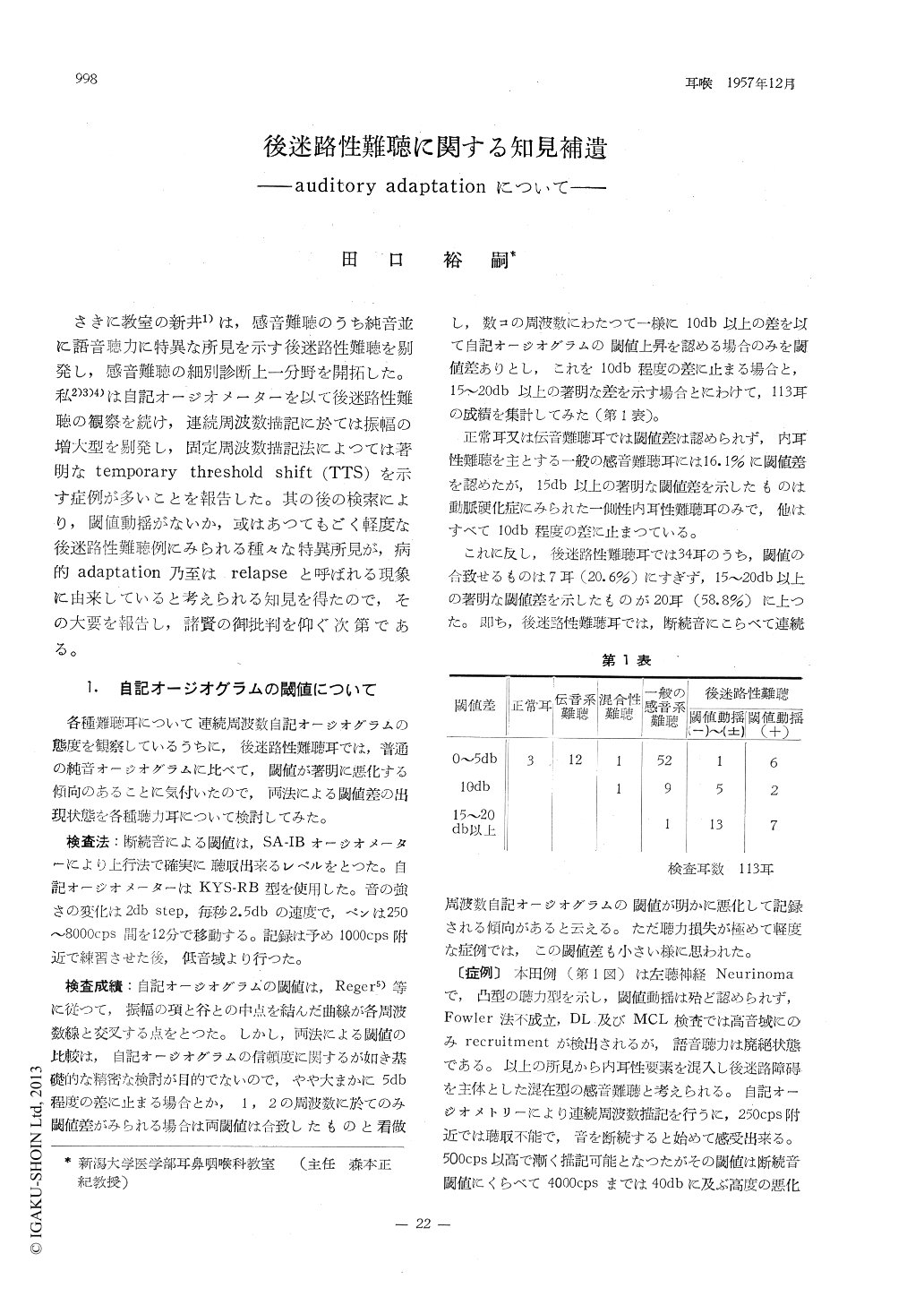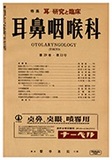- 有料閲覧
- 文献概要
- 1ページ目
さきに教室の新井1)は,感音難聴のうち純音並に語音聴力に特異な所見を示す後迷路性難聴を剔発し,感音難聴の細別診断上一分野を開拓した。私2)3)4)は自記オージオメーターを以て後迷路性難聴の観察を続け,連続周波数描記に於ては振幅の増大型を剔発し,固定周波数描記法によつては著明なtemporary threshold shift(TTS)を示す症例が多いことを報告した。其の後の検索により,閾値動揺がないか,或はあつてもごく軽度な後迷路性難聴例にみられる種々な特異所見が,病的adaptation乃至はrelapseと呼ばれる現象に由来していると考えられる知見を得たので,その大要を報告し,諸賢の御批判を仰ぐ次第である。
Taguchi reports his observations on auditory adaptation in retrocochlear deafness with following high lights in the result :
1) In cases of retrocochlear deafness a large threshold difference may be easily demonstrated between that of continuous tone and that of the interrupted one which may be brought out by use of Bekesy type audiometer.
2) With Hörclauerversuch a marked threshold change may be seen for the period of 3 minutes.
3) At 3,000 cps a pure tone of 80-90 db loudness may be made to disappear from the range of hearing with a few seconds.
4) It is believed that the cause of the manifestation of foregoing phenomenon may be due to establishment of abnormal adaptation and relapse; and, due to that cause in retrocochlear deafness that deteriorated articulations may thus, develop.

Copyright © 1957, Igaku-Shoin Ltd. All rights reserved.


